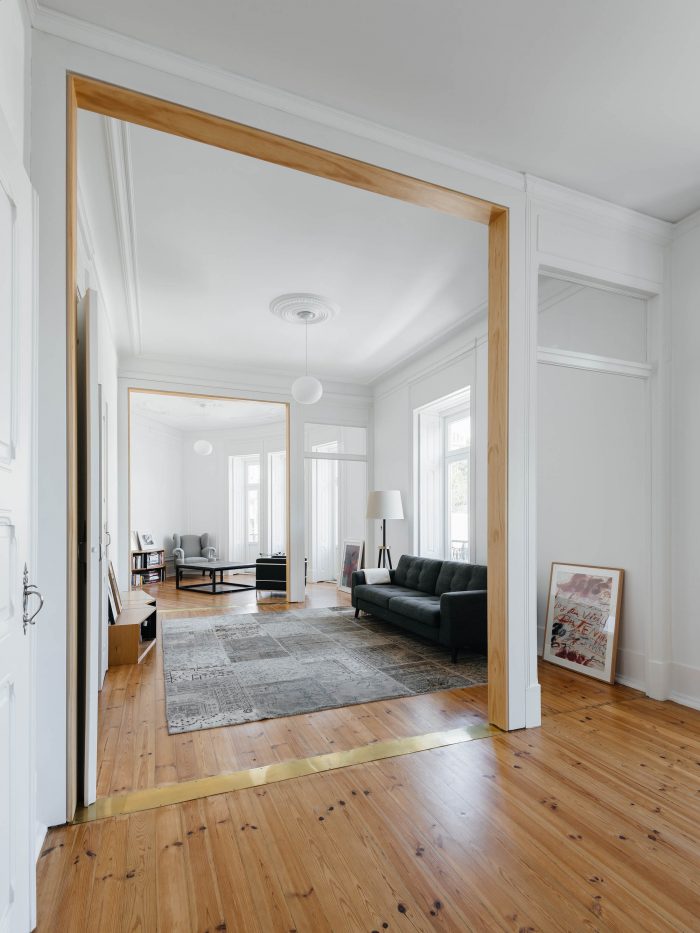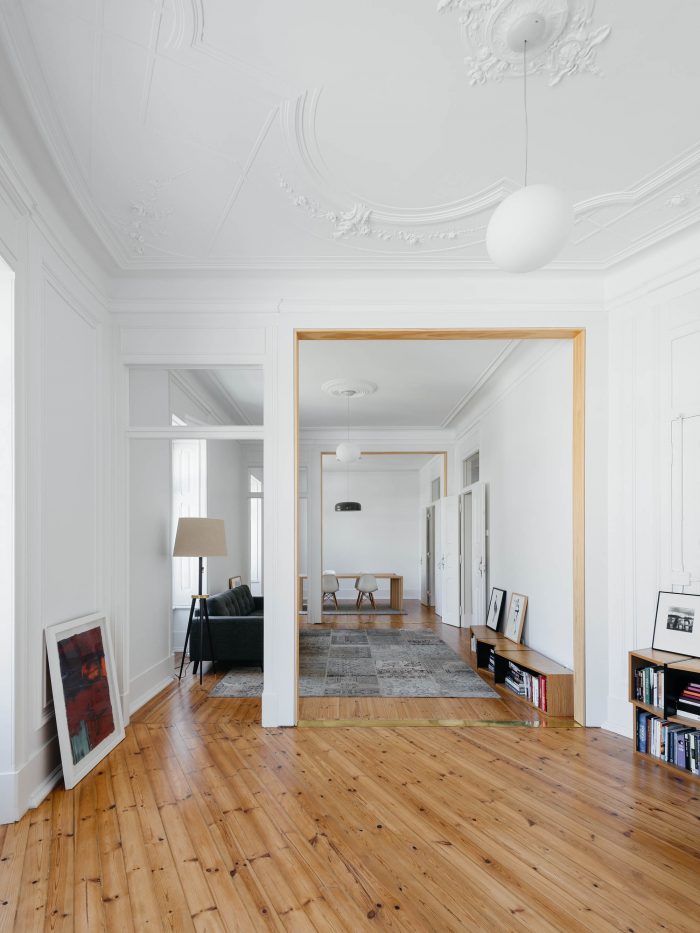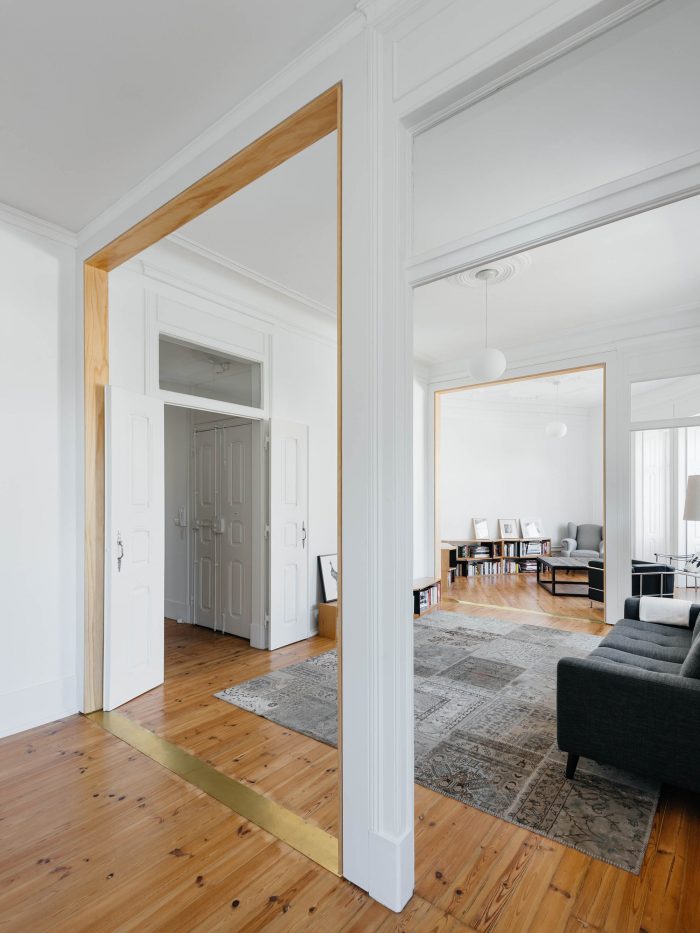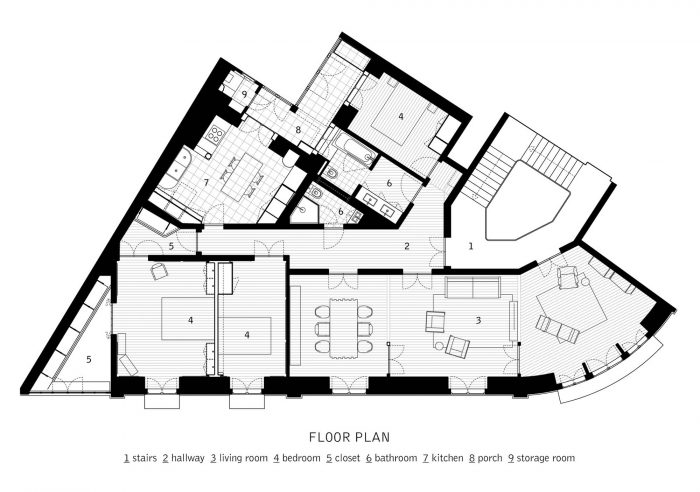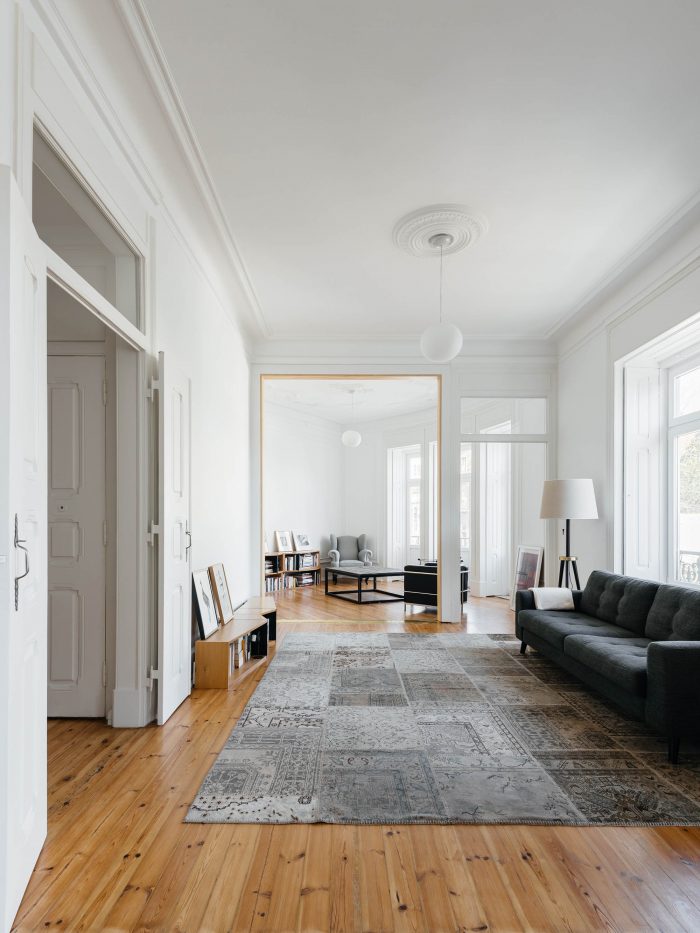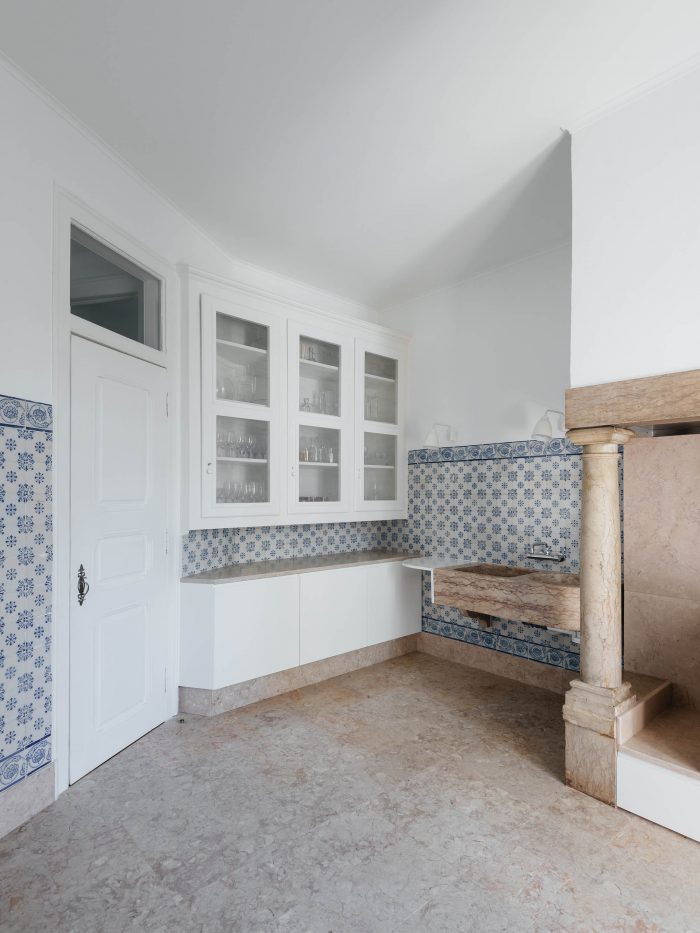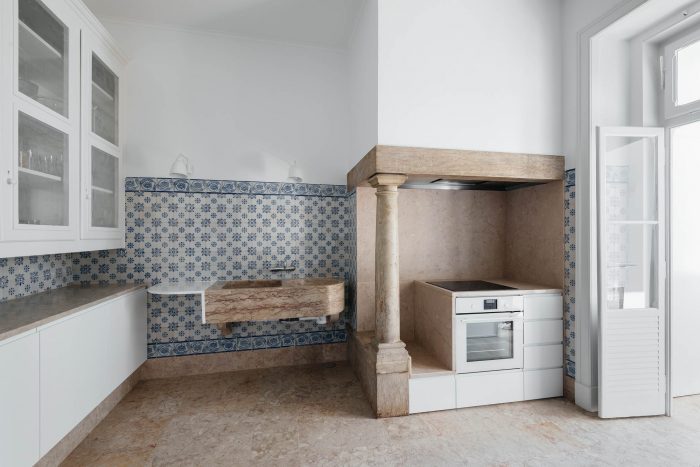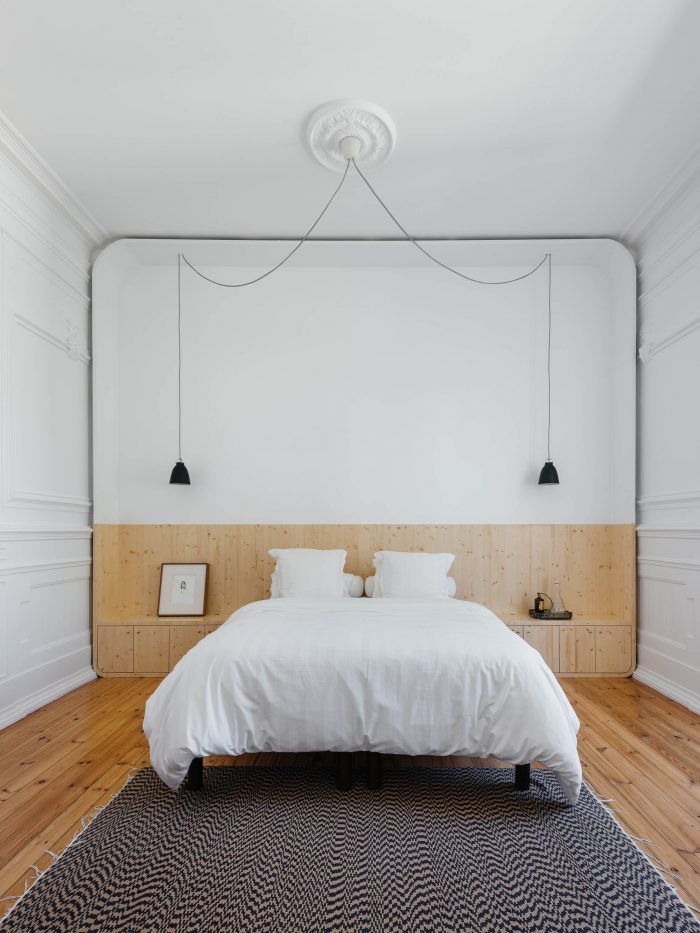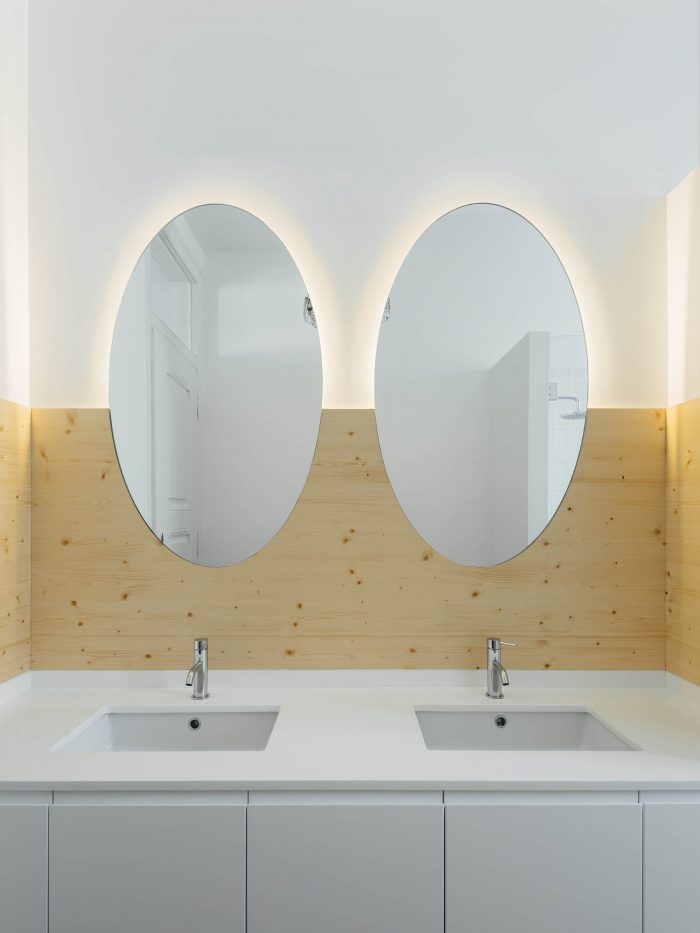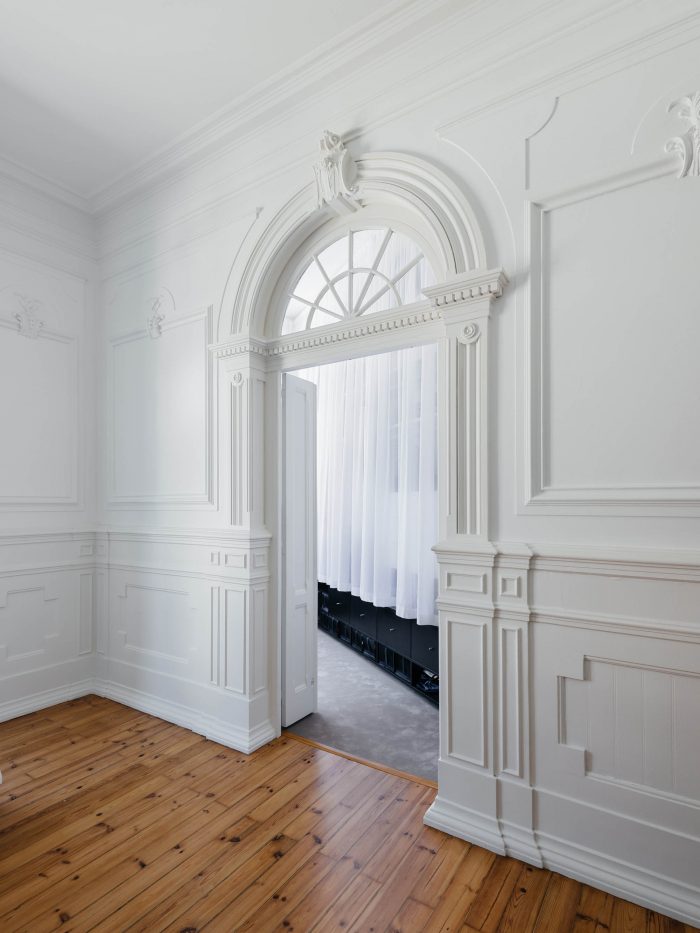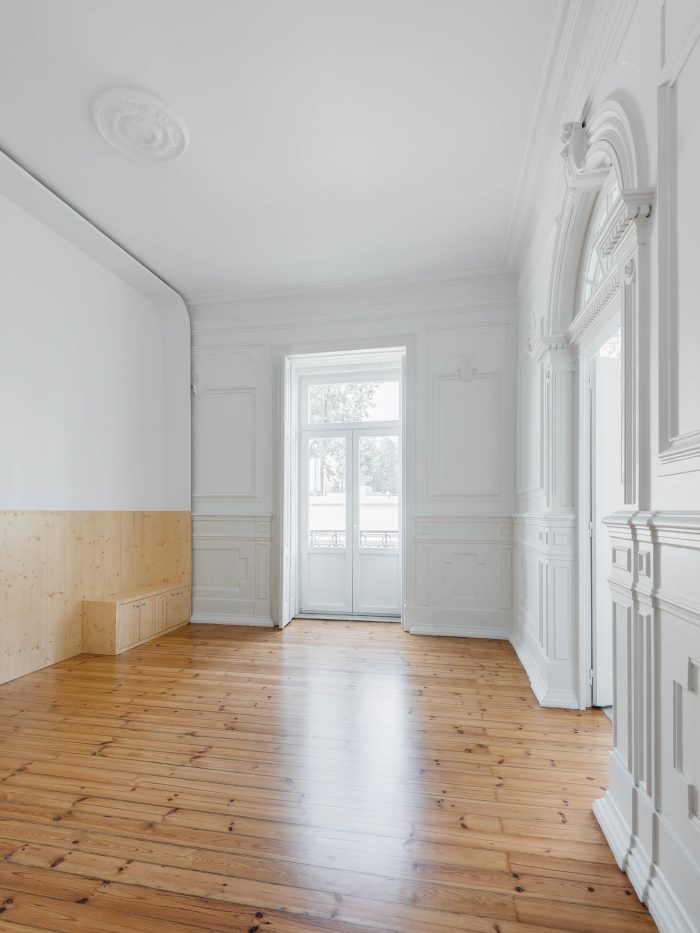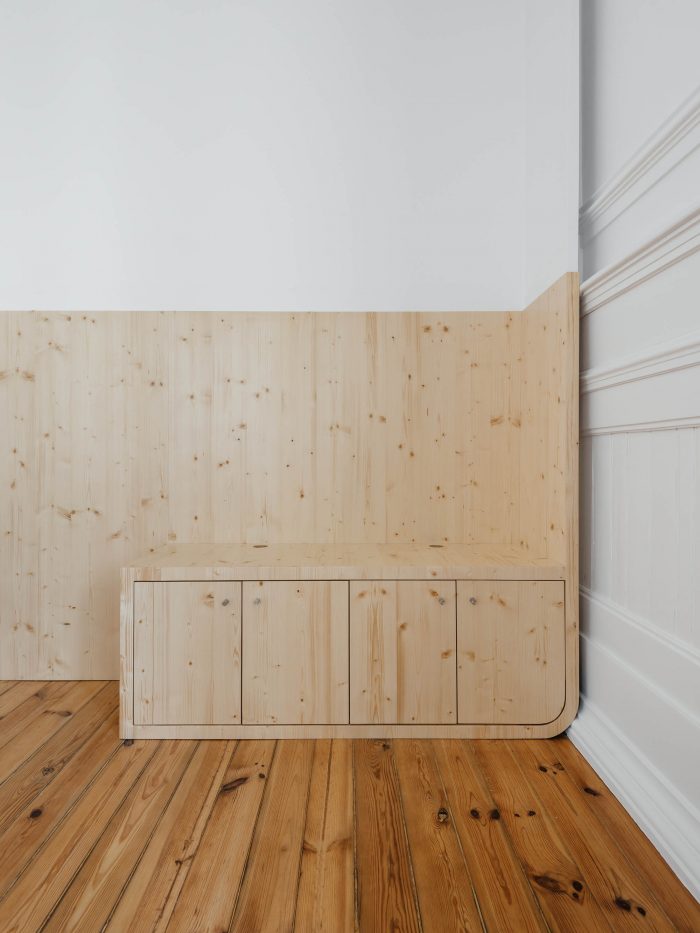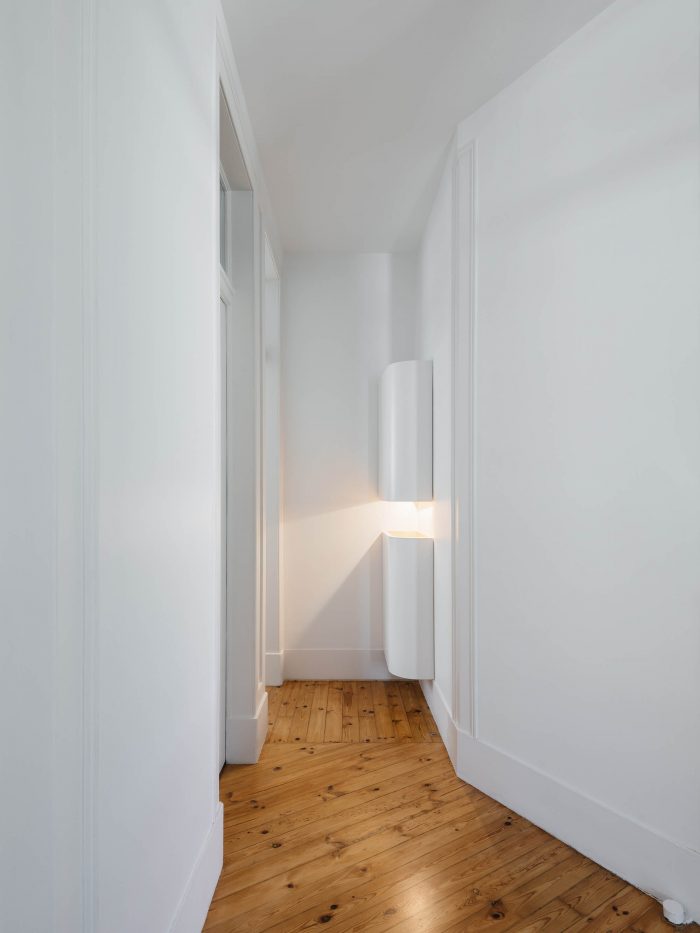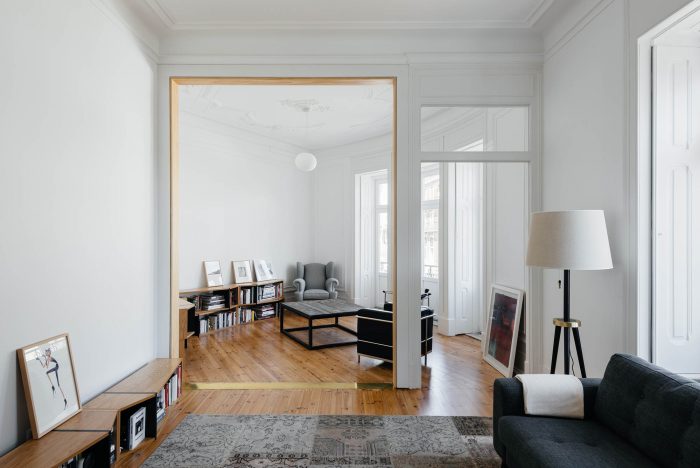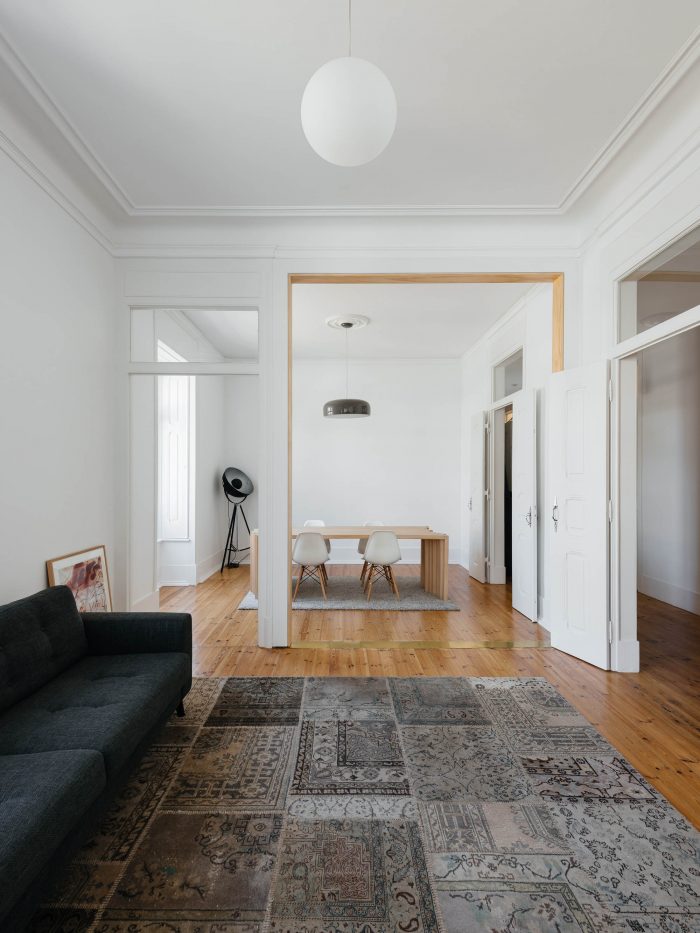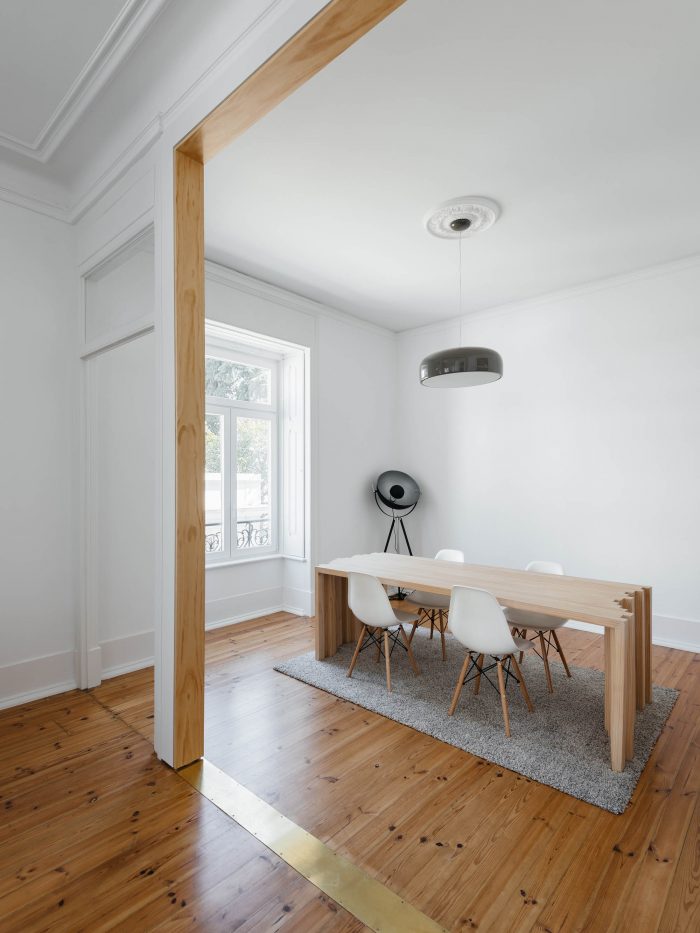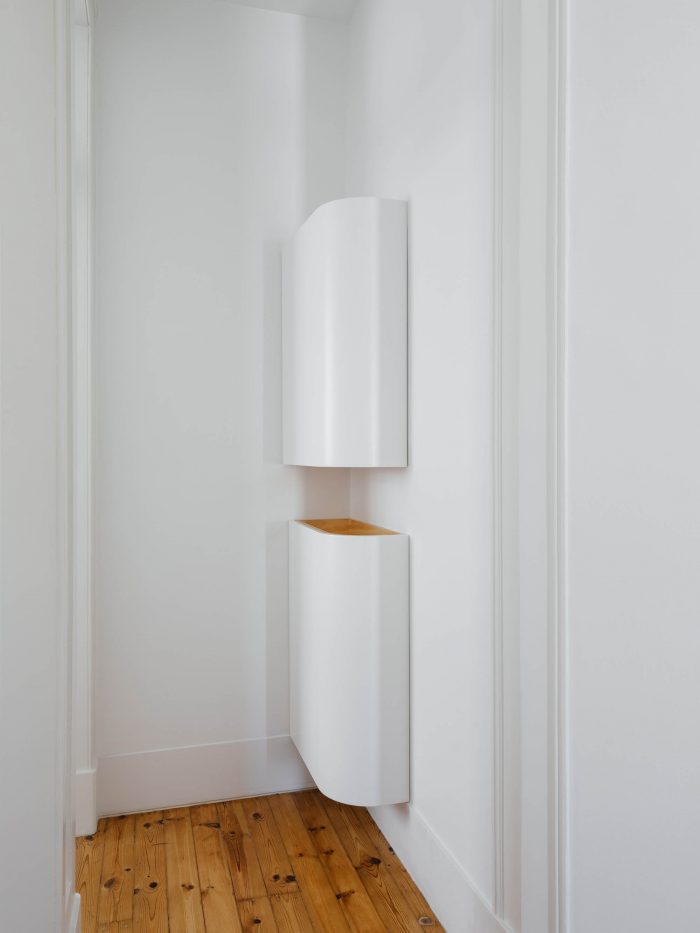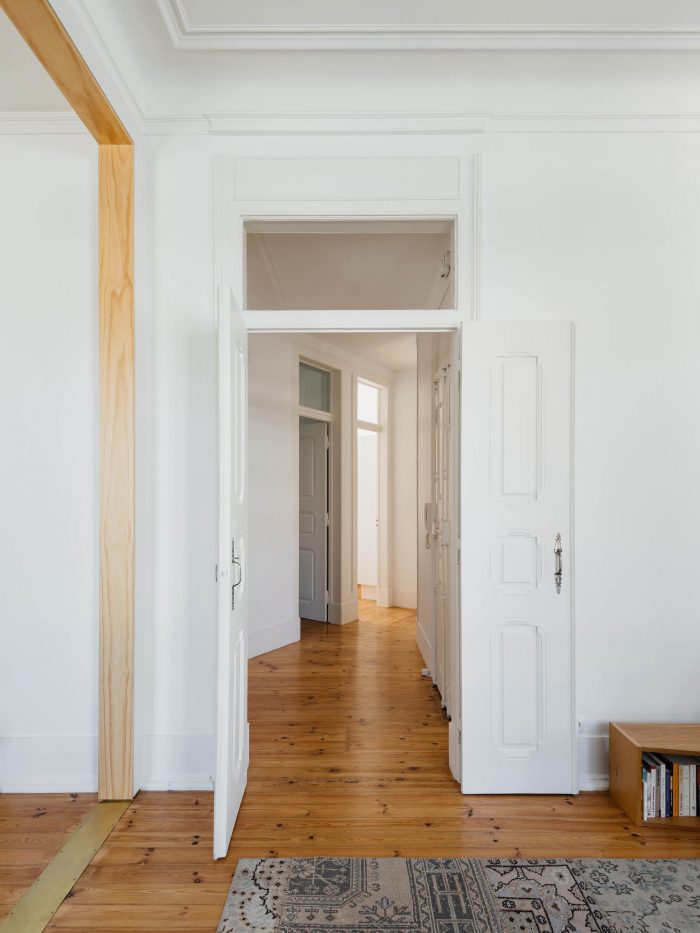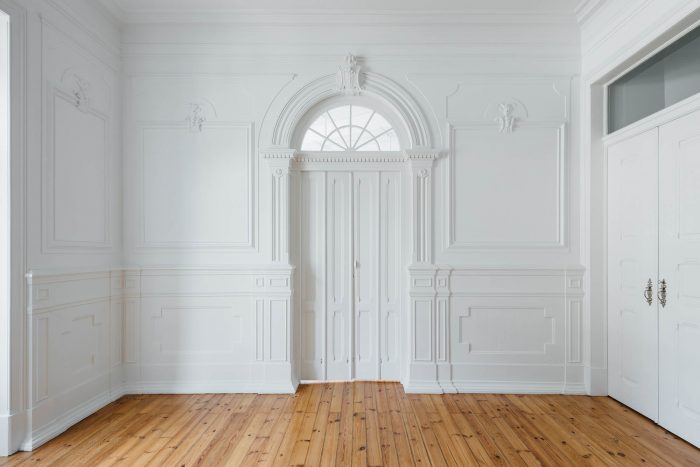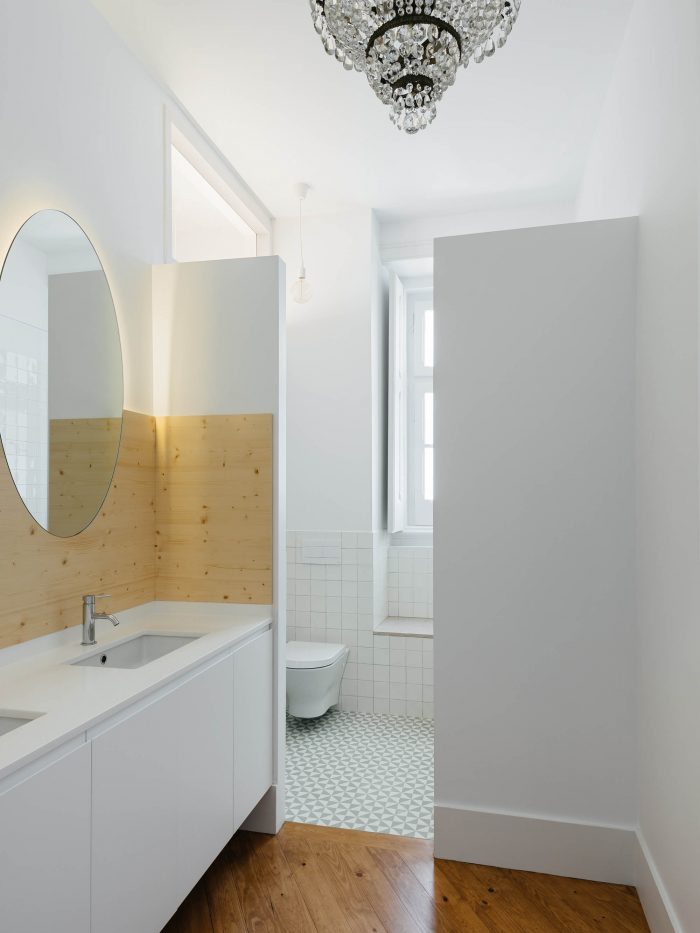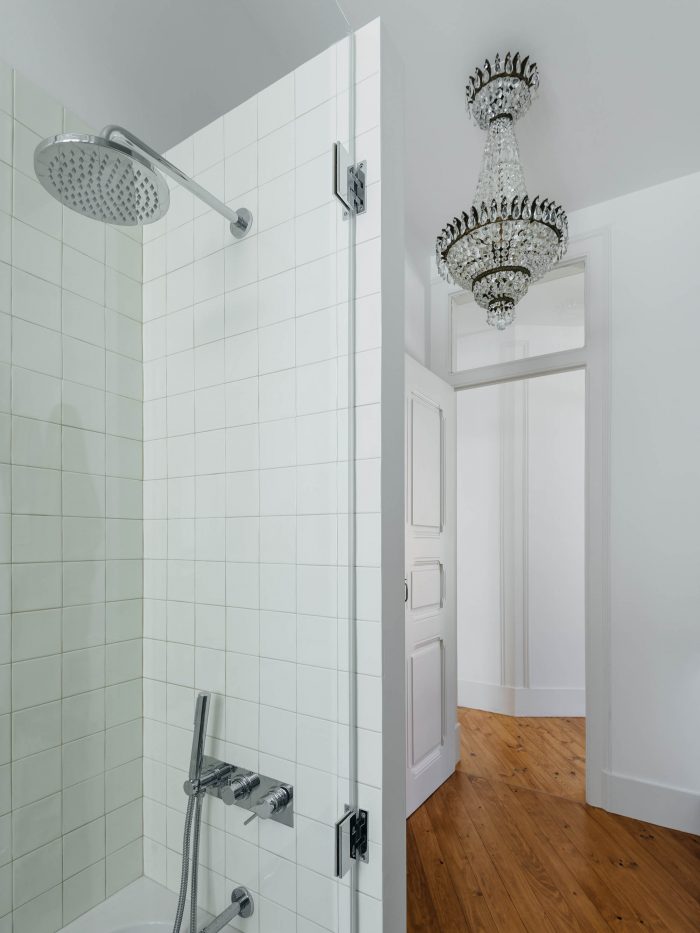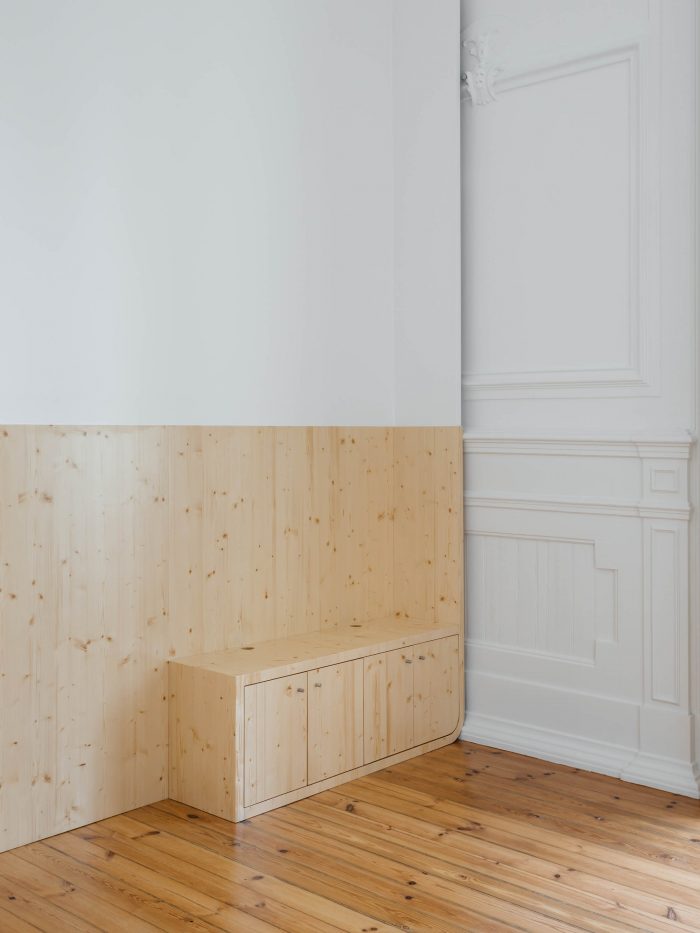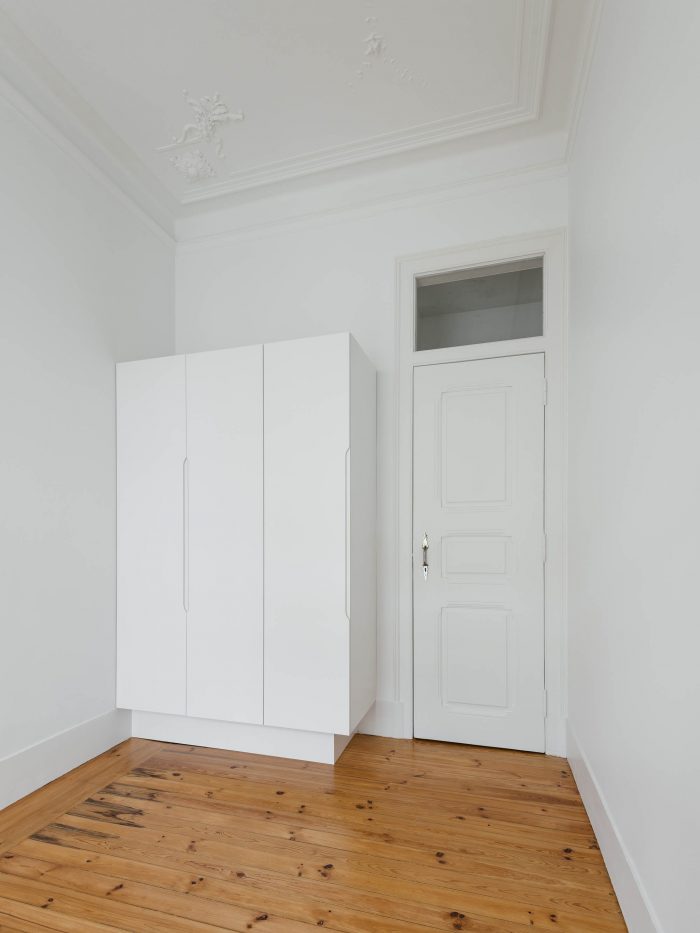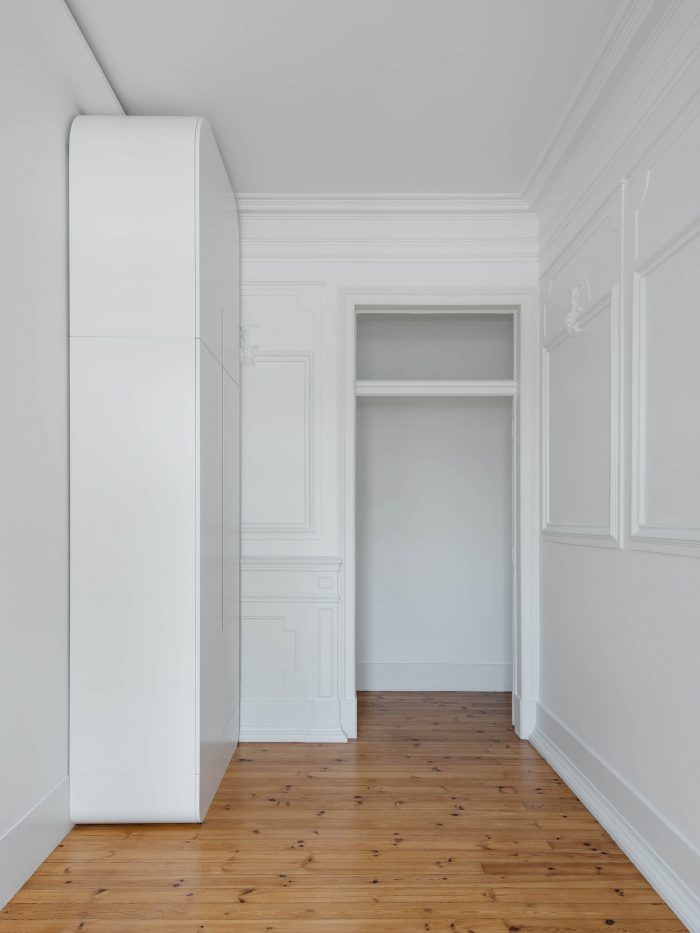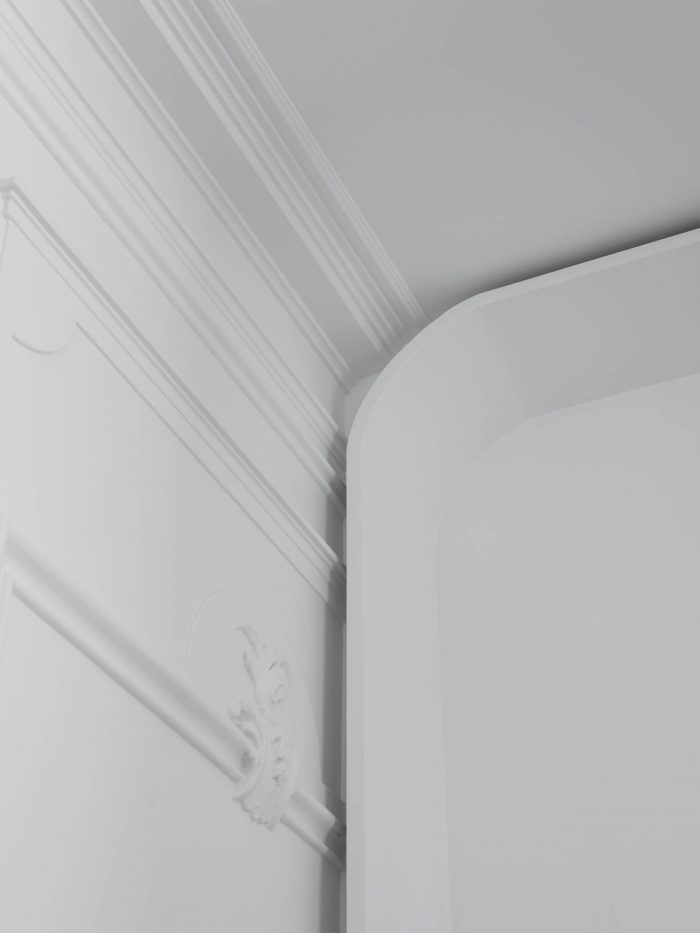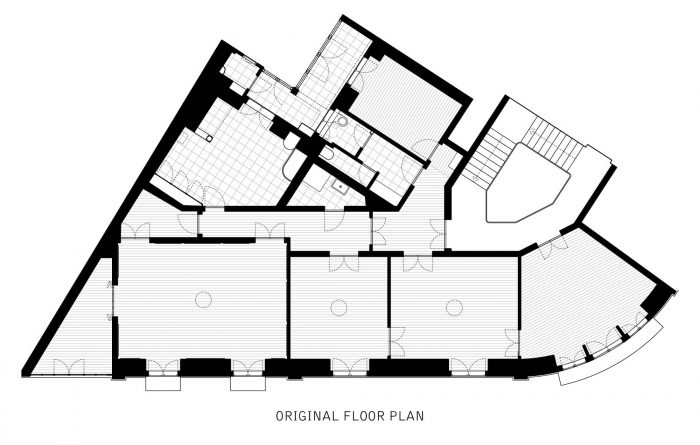不需要创造一个世界,而是创造一个世界的可能性,Jean-Luc Godard em Reflexivity in Film and Architecture, 1985.
It is not necessary to create a world, but the possibility of a world, Jean-Luc Godard em Reflexivity in Film and Architecture, 1985.
反射性作为一个概念,在电影或文学中的使用,以及在建筑中的应用,指的是当作品突然将焦点吸引到自己身上的那一刻,作为一种构建,以及作为一种虚构的现实。
Reflectivity as concept, as much in its use in film or literature as in its appropriation by architecture, refers to that moment when the work suddenly draws focus onto itself as a construct, and as a fictional reality.
同样,在Estrela公寓所做的干预揭示了其自身的翻新逻辑,使基于时间和形式的断裂变得明确,但也承认这一行动最终产生的不同现实之间的和解可能性。
Likewise, the intervention done in the Apartment in Estrela reveals its own renovation logic, making the time-based and formal ruptures explicit, nevertheless acknowledging the reconciliation possibilities between the distinct realities which this action eventually spawns.
当我们考虑到公寓不仅有良好的建筑质量,而且条件良好,可以居住时,承认翻新本身的性质所提出的问题变得更加相关。因此,干预更多的是对其方案的重新定义,并最终增加客户对空间的使用可能性。
Acknowledging the questions raised by the nature of renovation itself becomes even more relevant when we take into account that the apartment not only had a good building quality already, but also was in good conditions and ready to be inhabited. The intervention therefore had more to do with a redefinition of its programme, and ultimately the increase of appropriation possibilities of space by the client.
因此,该项目包括两种不同的方法:第一种更直接的方法是恢复原有的设计元素和语言,以扩大其建设性的品质。木地板、厨房瓷砖、门饰、墙壁和天花板的装饰都没有改变。公寓的南侧,包括厨房、服务区和一间卧室,也保留了原来的配置。
The project thus comprises two different approaches: the first and more direct one deals with recovering the original design elements and language in order to expand its constructive qualities. The wooden floors, kitchen tiles, door trims, and wall and ceiling decorations were left unchanged. The south side of the apartment, comprising the kitchen, service areas and a bedroom, was also left with its original configuration.
我们在厨房的瓷砖表面的工作方式表明,我们希望突出原始特征和干预之间的差异。除了让人感觉到装修过程中的连续性,它还提供了与并列的新元素的对比。
The way we worked on the kitchen’s tiled surfaces shows the desire to highlight the differences between the original traits and the intervention. Besides from allowing a sense of continuity in the renovation process, it also provides contrast with the juxtaposed new elements.
这种并置在公寓的北侧更为明显,在那里我们颠倒了方案的整体性。最初由三间卧室组成的私人区域,让位于一个单一的客厅。社会区域,包括以前的客厅和书房,变成了两间卧室和一个步入式壁橱。这种重新配置涉及到如何将迄今为之分离的东西结合起来,并将迄今为之完整的东西分割开来。
This juxtaposition is made more evident on the north side of the apartment, where we inverted the totality of the programme. The private areas, initially comprising three bedrooms, gave place to a single living room. The social area, comprising the former living-room and a study, became two bedrooms and a walk-in closet. This reconfiguration deals with how to unite what had so far been separate, and divide what had so far been whole.
在起居室里,被拆除的墙壁的参照物,通过它的框架底片,作为一个基于时间的坐标,现在被一个木头和黄铜的边框所定义。还有一丝墙体交叉的痕迹,仅仅是门的痕迹,它们剩余的饰边和门头。反过来,现在分隔卧室的墙是一个相当肯定的特征,把人们的注意力拉回到自己身上,作为一个分隔装置,并把空间阅读带回原来的客厅。
In the living room, the reference to the demolished walls stands, through its framed negative, as a time-based coordinate, is now defined by a rim of wood and brass. There is also a hint of wall-crossing, left by mere traces of doors, their remaining trims and headers. In its turn, the wall now dividing the bedrooms is a rather affirmative feature, drawing attention back to itself as a separation apparatus, and taking spatial reading back to the original living room.
这很容易被理解为一种联合和分离的行为,成为项目的主要主题之一–可逆性。空间问题变成了一个与时间有关的问题。现在我们已经接受,装修是一个持续的变化过程的一部分,并不断修正其自身的有效性。
What could be easily understood as an act of uniting and separating becomes one of the project’s main themes – reversibility. The space issue becomes a time-related concern. Now we have come to accept that renovation is part of an ongoing process of change and constant revising of its own validity.
那么,正是从以前的元素和新元素之间的不断对话中,出现了创造出意想不到的可能性。一种作为重新思考和挑战预先建立的功能和关系的方式,从居住者到建筑本身。
It is, then, from the constant dialogue between the previous elements and the new ones, that the creation of unexpected possibilities emerges. A kind of palimpsest as a way of rethinking and challenging the pre-established functions and relationships, from dwellers to architecture itself.
Architects: Aurora Arquitectos
Area: 200 m²
Year: 2015
Photographs: Do Mal o Menos
Manufacturers: Blum, Flos, Legrand, JNF, Sanitana, Somor
Design Team:Sérgio Antunes, Sofia Reis Couto, Rita Ferreira, Pedro França, Bruno Pereira, Tânia Sousa
Construction:Requinte Pormenores
City:Lisbon
Country:Portugal


